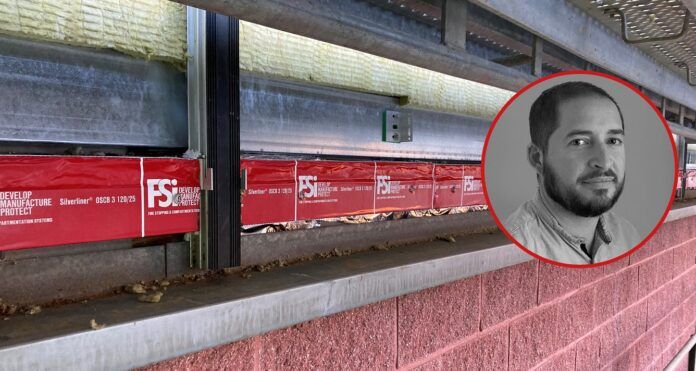Offsite construction currently accounts for 7 percent of the UK market and this is expected to increase considerably. Considering this, Liam Blears, head of facades at passive fire protection specialist FSi Promat, discusses how offsite construction methods can optimise cavity barrier installation in new buildings.
With recent build times indicating that modular projects can be completed in half the time using offsite construction, it is easy to see why this building method has been tipped for considerable growth. The sequencing and planning essential to successful completion within set timeframes brings a number of benefits, including for cavity barrier installation, where precision supports efficient installation.
By planning passive fire protection into the design stage, the specification can be considered in detail, including what areas it needs to be applied to, and if third-party approved testing has been carried out to support that use. In a uniform design this is especially timesaving as the specification is repeated and can save materials by minimising waste.
In a unitised system, entire prefabricated units are built offsite, with the facades and cavity barriers already in place ready to be locked to the core that has been constructed on site. In the sequence of building, cavity barriers will be fixed into place after rain screens have been added to facades. In a modular building the facades will also be constructed offsite but attached to the exterior of the modules when they are on site.
Efficient monitoring
Early planning means installation time spent on cavity barriers is reduced, while also allowing passive fire protection specialists to carry out checks to ensure no gaps have been left that could compromise the protection provided. Cavity barriers are fitted behind cladding to provide passive fire protection while maintaining airflow. In the event of a fire breaking out the intumescent edge of the cavity barrier reacts to reinstate the compartmentation, stopping the spread of fire for a set period. FSi Promat’s Silverliner Open State Cavity Barrier (OSCB) system provides a range of protection from 30 minutes (EI) up to 120 minutes (EI).
If installation is planned in advance and carried out within a strict time frame as part of a compartmentalised process this supports fast and efficient monitoring of installation, allowing cavity walling to be checked as it is put in place.
Standards need to be at the forefront of industry progress, especially so from a fire safety point of view. Planning, adequate checks and raising awareness of skills competence are all key factors in delivering the high standards needed for cavity barrier installation – and offsite construction by its nature does support this.
Better precision
One of the key benefits of working in this way is that it supports greater accuracy as manufacturing and fitting cavity barriers in a controlled environment is ideal to ensure more uniform, aligned modules. As different sections of the building envelope are completed at the same time to support the sequenced timeframe, this allows for excellent control in the standard of the installation.
With more traditional methods of construction FSi Promat provides specialist training to sub-contractors, with the technical team returning to ensure passive fire protection has been correctly installed – if there are any errors the cavity wall needs to be removed and reinstalled.
If installation is planned in at an early stage and checks are carried out as cavity walling is installed it leaves fewer variables that could impact on the installation timeframe.
Accuracy
Fast turnarounds, quality products, efficient and predictable costings and use of materials make it easy to see why modular and offsite construction is being adopted more and more. It solves design issues and, in the case of passive fire protection, allows for safer and more accurate installation, which means it can do its job to protect lives.
It is anticipated that more and more building projects will make use of the convenience, accuracy and sustainability savings offsite modular construction can deliver.
This is a great fit for the safe, accurate installation of passive fire protection products. Precision is vital and as a system that incorporates that from the early stages modular offsite construction is an ideal way to ensure cavity walling is installed expertly – and will do its job to protect lives if needed.




